Rotational Inertia Demonstrator
 Wednesday, September 24, 2014 at 12:15AM
Wednesday, September 24, 2014 at 12:15AM 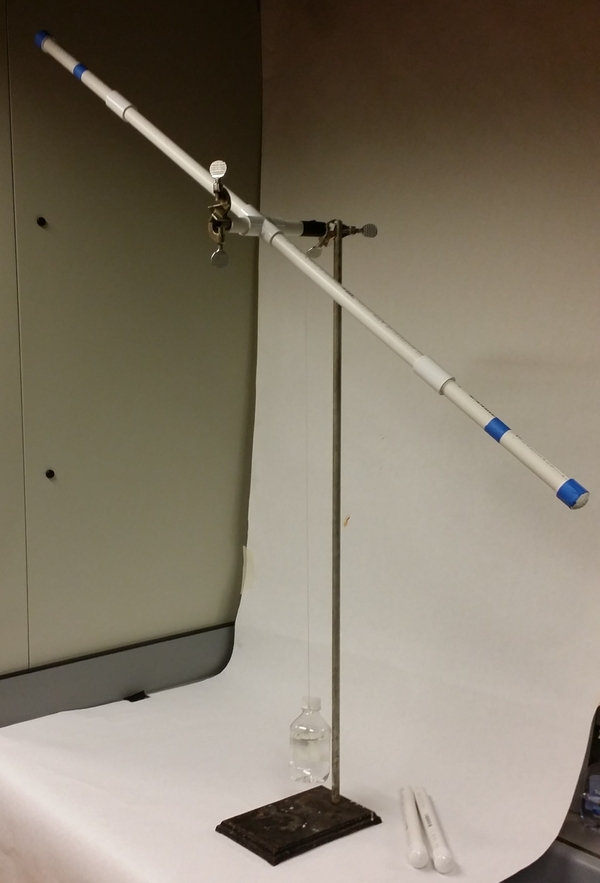 Blue tape arms are filled with sand, hollow arms are on the tableA way to cheat in baseball is to cork a bat. That is, drill out the center of the bat to make it lighter and then fill the bat with cork so that it is less likely to crack when it hits the ball. You might imagine that a player would want as heavy a bat as possible to get the most momentum since momentum is mass times velocity. However, a lighter bat can be accelerated to higher velocity, evening out the lost mass, leaving the momentum close to the same. (See Nathan, 2011)
Blue tape arms are filled with sand, hollow arms are on the tableA way to cheat in baseball is to cork a bat. That is, drill out the center of the bat to make it lighter and then fill the bat with cork so that it is less likely to crack when it hits the ball. You might imagine that a player would want as heavy a bat as possible to get the most momentum since momentum is mass times velocity. However, a lighter bat can be accelerated to higher velocity, evening out the lost mass, leaving the momentum close to the same. (See Nathan, 2011)
The key difference is that a lighter bat can turn more easily so that a player can wait just a fraction longer to evaluate the pitch before needing to move the bat. This turns out to be a big edge. With a metal or composite material bat, it is possible to create hollow bats that are much lighter than a wooden bat for the same length. So called "negative bats" have lengths that are larger than the weight of the bat in ounces. Many leagues limit these as to limit the offense.
This device demonstrates that idea. The ends of the arms of the device are filled with sand. They have a torque (a turning force) applied by the falling water bottle. This causes the arms to turn. However, the ends of the arms can be replaced by hollow tubes. When the bottle pulls down on the arms with the hollow tubes, the arms turn much faster.
Materials
- about 8 feet 1/2 inch PVC
- four 1/2 inch PVC endcaps
- cross or four way 1/2 inch PVC connectors
- two 1/2 inch PVC slip connectors
- 6 inches steel rod, preferably powder coated in a diameter close but smaller than the inside diameter of 1/2 inch PVC
- PVC ratchetting cutter or hacksaw
- 30 inches of string
- water bottle or other weight
- 1 cup sand
- funnel
- tape measure
- tall ring stand
- two right angle bar connectors (sometimes called cheeseburoughs) for ring stands
- blue or black tape, preferably gaffers' tape
- glue gun and two sticks of glue
- hacksaw (not shown)
Procedure
- Use the hacksaw to cut the steel bar to about 10 inches long.
- Attach the steel bar to the ring stand with a right angle bar connectors.
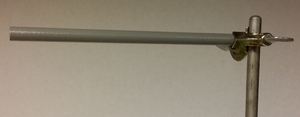
- Cut two pieces of PVC so that when they are attached to the cross connector they almost cover the steel rod.
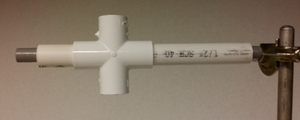
- Attach another clamp to the end of the rod, but be sure that the cross connector can turn freely. PVC has a relatively low coefficient of friction on powder coated steel, so even without bearings it should turn easily.
- Cut two pieces of PVC about 20 inches long. The exact length is less important than having them be the same length. Attach the slip connectors. Connect to the cross connector.
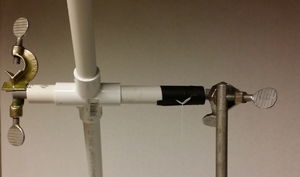
- Cut four shorter pieces of PVC about 10 inches long. Again the exact length is less important than having them be all the same lenght. Attach the endcaps to all the pieces.
- Using the funnel, fill two of the shorter pieces with sand until about 1 inch from the top. Try to have both pieces have the same amount of sand in them.
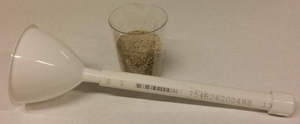
- Fill the rest of the space with hot glue so that the sand is trapped inside.
 Sorry about the focus.
Sorry about the focus. - Wait for the glue to cool and set. Mark the pieces with tape.
- Attach to the slip connectors.
- Fill the bottle with water. Attach string to the mouth of the bottle and tape the string to the PVC. The string should be long enough that the bottle just rests against the ring stand when the string is fully elongated.
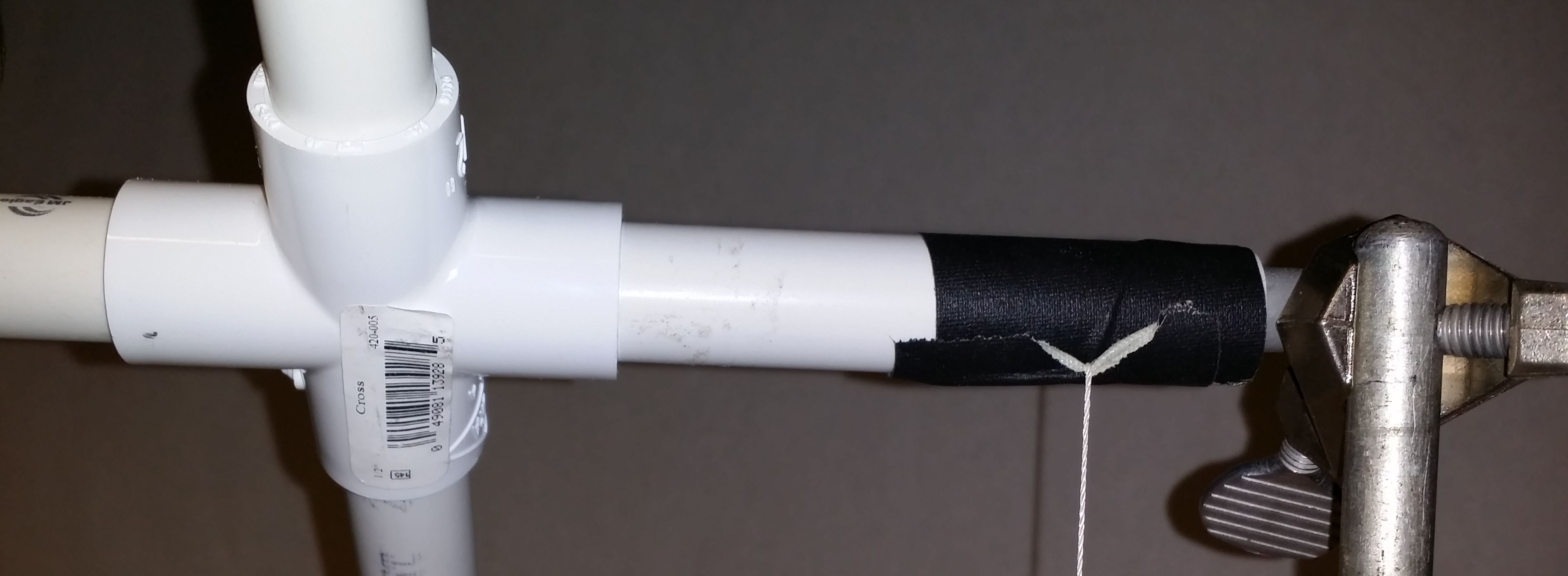
- Turn the arms to wind up the string. Let fall. Measure the time it takes for the bottle to reach the base of the ring stand. Replace the ends with the other two that don't have the sand. Repeat.
A couple of terrible videos, but they get across how it works.
With sand (falls for about 30 seconds)
Without sand (falls for about 20 seconds)
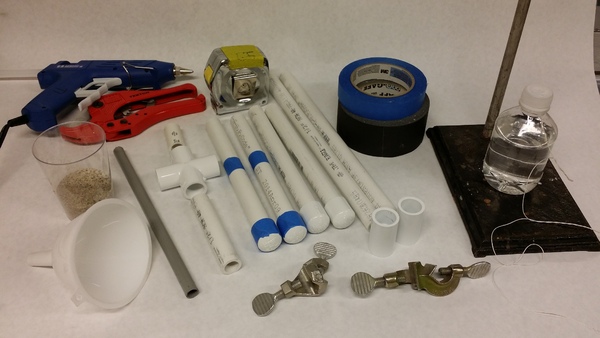
Reader Comments